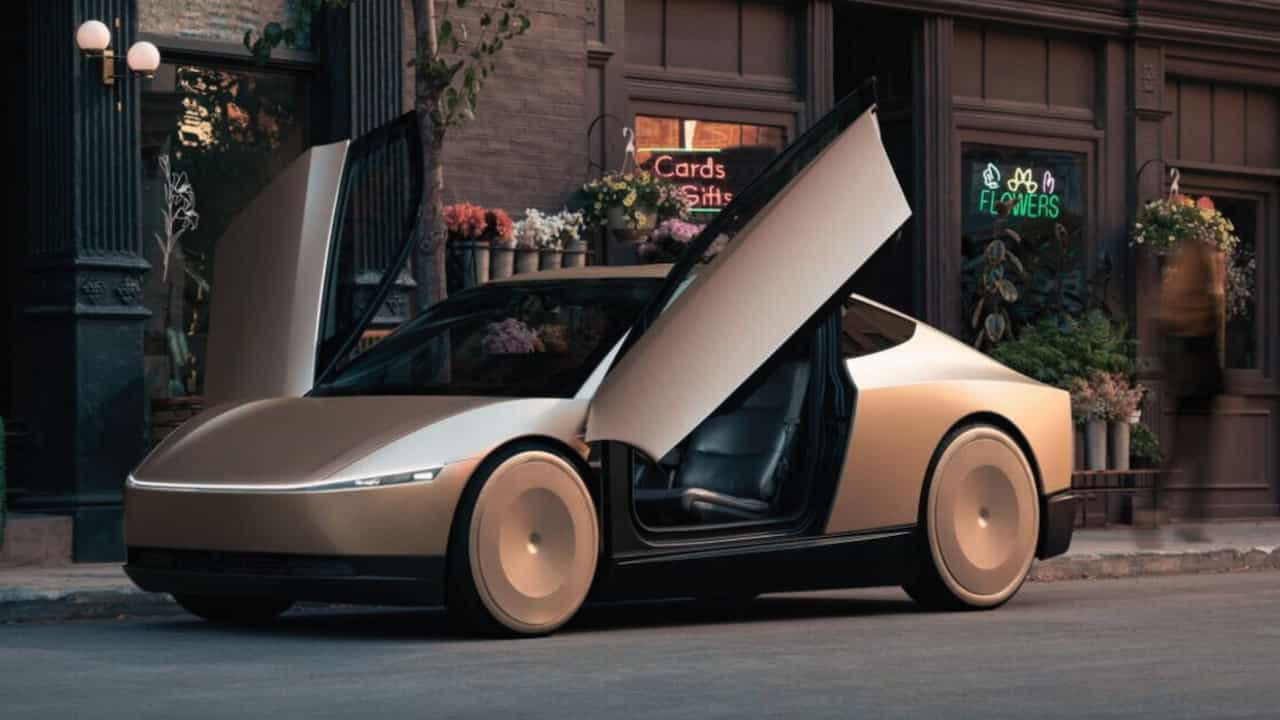Tesla’s Cybercab Unveiled: Musk’s Bold Vision for Affordable Robotaxis
As a news reporter in Burbank, California, I witnessed Elon Musk’s latest spectacle: the unveiling of Tesla’s long-awaited robotaxi, dubbed the “Cybercab.” The event, held at a Warner Bros. Discovery studio lot, showcased Tesla’s ambitious plans for the future of transportation.
Musk rode onto the stage in style, arriving in one of the sleek Cybercab prototypes. The two-door sedan turned heads with its futuristic design, featuring upward-opening doors reminiscent of butterfly wings.
But what caught everyone’s attention was the absence of a steering wheel and pedals – a clear statement of Tesla’s commitment to full autonomy.
The Tesla CEO didn’t stop there. He also unveiled the “Robovan,” a larger concept vehicle designed to transport up to 20 people. This move signals Tesla’s intention to disrupt not just personal transportation but also mass transit.
Musk’s bold claims about the Cybercab’s future left many in the audience buzzing. He suggested that production could begin as soon as 2026, with a price tag potentially under $30,000. Given Tesla’s history of missing deadlines, these ambitious targets raised eyebrows among industry experts.
Nancy Tengler, CEO of Laffer Tengler Investments and a Tesla investor, summed up the sentiment of many attendees: “The concepts were all grand. Is the idea super cool? Absolutely.” However, she noted that the only concrete detail provided was the $30,000 price point for the Cybercab.
The presentation left many questions unanswered. Musk didn’t delve into the technical details of Tesla’s plans to achieve full autonomy. The company’s current “Full Self-Driving” features still require constant human oversight, and the jump to genuine autonomy remains a significant challenge.
Tesla’s timeline for releasing Cybercab seems optimistic, especially considering recent comments from U.S. presidential candidate Donald Trump. At a Detroit Economic Club event, Trump expressed skepticism about autonomous vehicles, hinting at potential regulatory hurdles for companies like Tesla.
Despite the excitement surrounding the Cybercab, some analysts expressed disappointment. They had hoped for updates on Tesla’s plans for more affordable models soon. The lack of information on this front has cast doubt on the company’s sales prospects for the coming year.
Gene Munster, managing partner at Deepwater Asset Management, praised the Cybercab’s design but tempered expectations: “They nailed the form factor. But the investor reaction will probably be muted because the timeframe is still far away.”
The event itself wasn’t without hiccups. It started nearly an hour late, with Musk later explaining on his social media platform, X, that a medical emergency in the crowd caused the delay—this unexpected turn of events added to the evening’s drama.
As the dust settles on Tesla’s latest announcement, the automotive world is left to ponder Musk’s vision’s feasibility. Can Tesla truly deliver an affordable, fully autonomous robotaxi by 2026? Will regulatory challenges pose insurmountable obstacles? And how will these plans impact Tesla’s more immediate product lineup?
One thing is sure: Elon Musk continues to push the boundaries of what’s possible in the automotive industry. Whether the Cybercab becomes a reality or a futuristic concept, it has already sparked conversations about the future of transportation and Tesla’s role in shaping it.
As we look ahead to 2026 and beyond, all eyes will be on Tesla to see if they can turn this bold vision into reality. The road to affordable, autonomous transportation may be long, but Musk and his team seem determined to navigate it at full speed.
